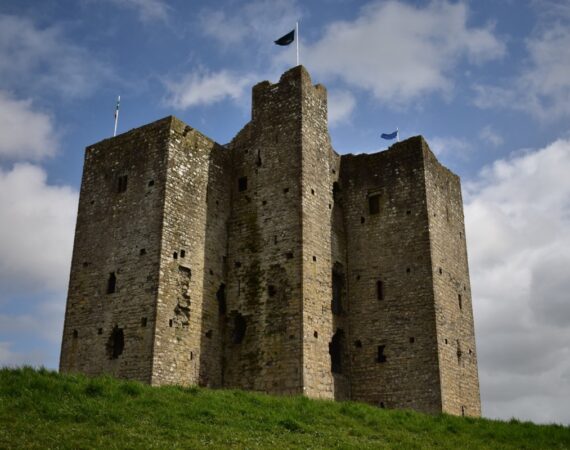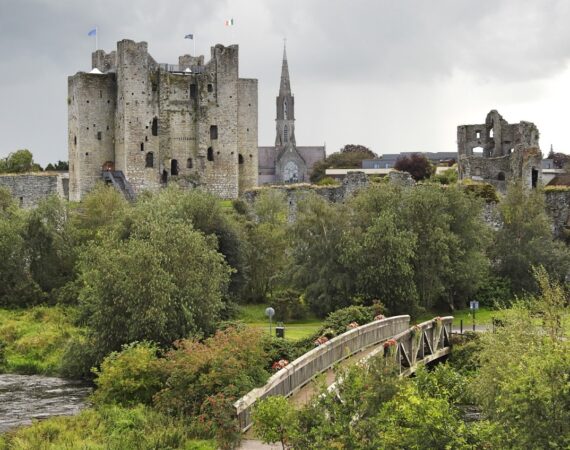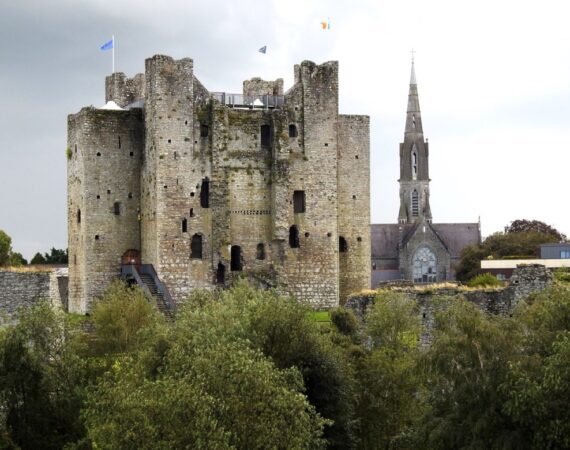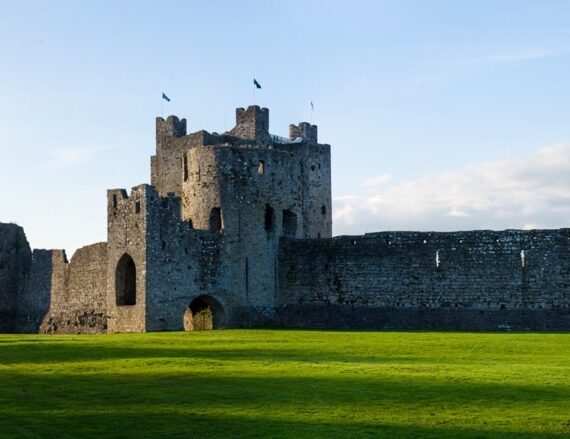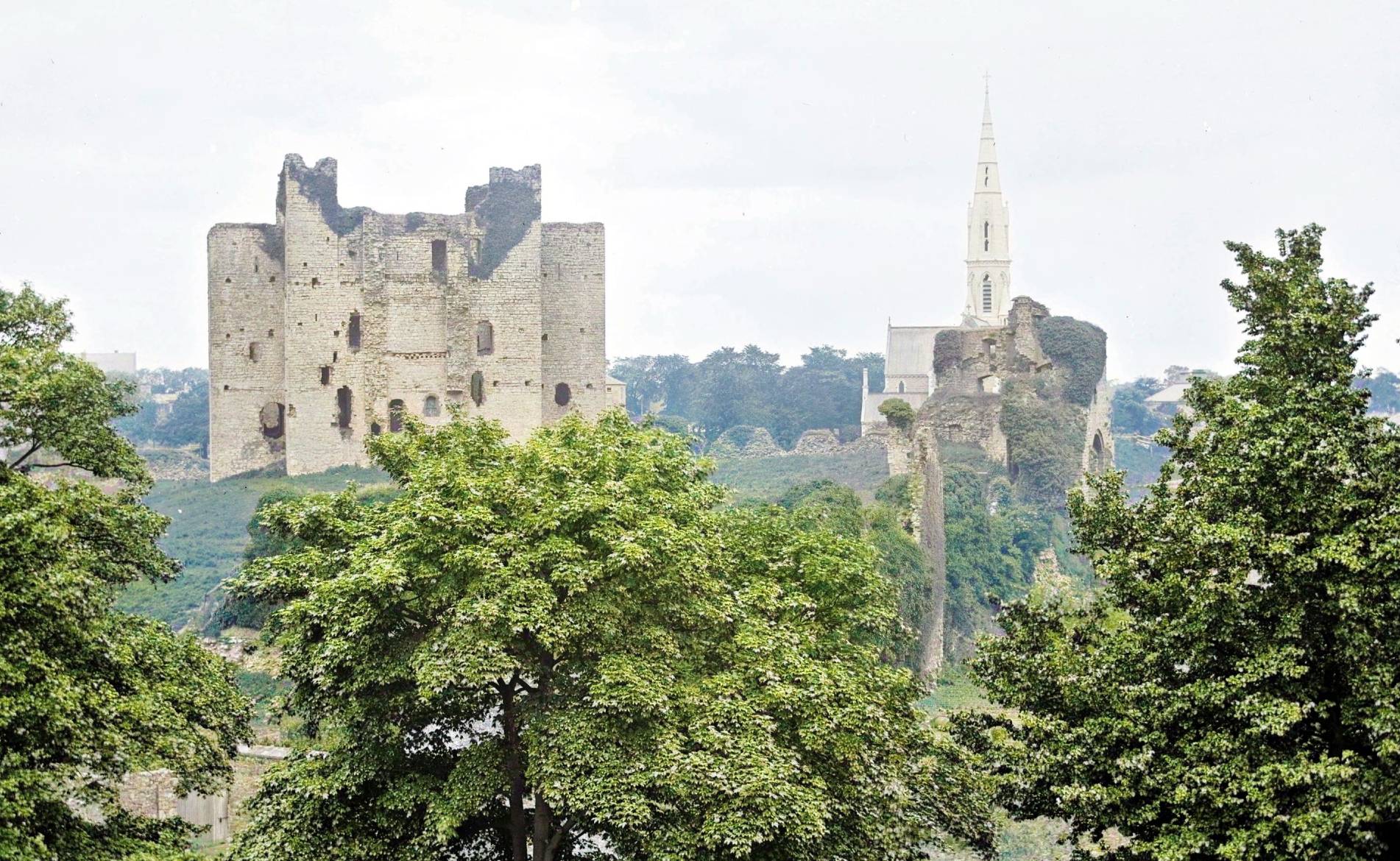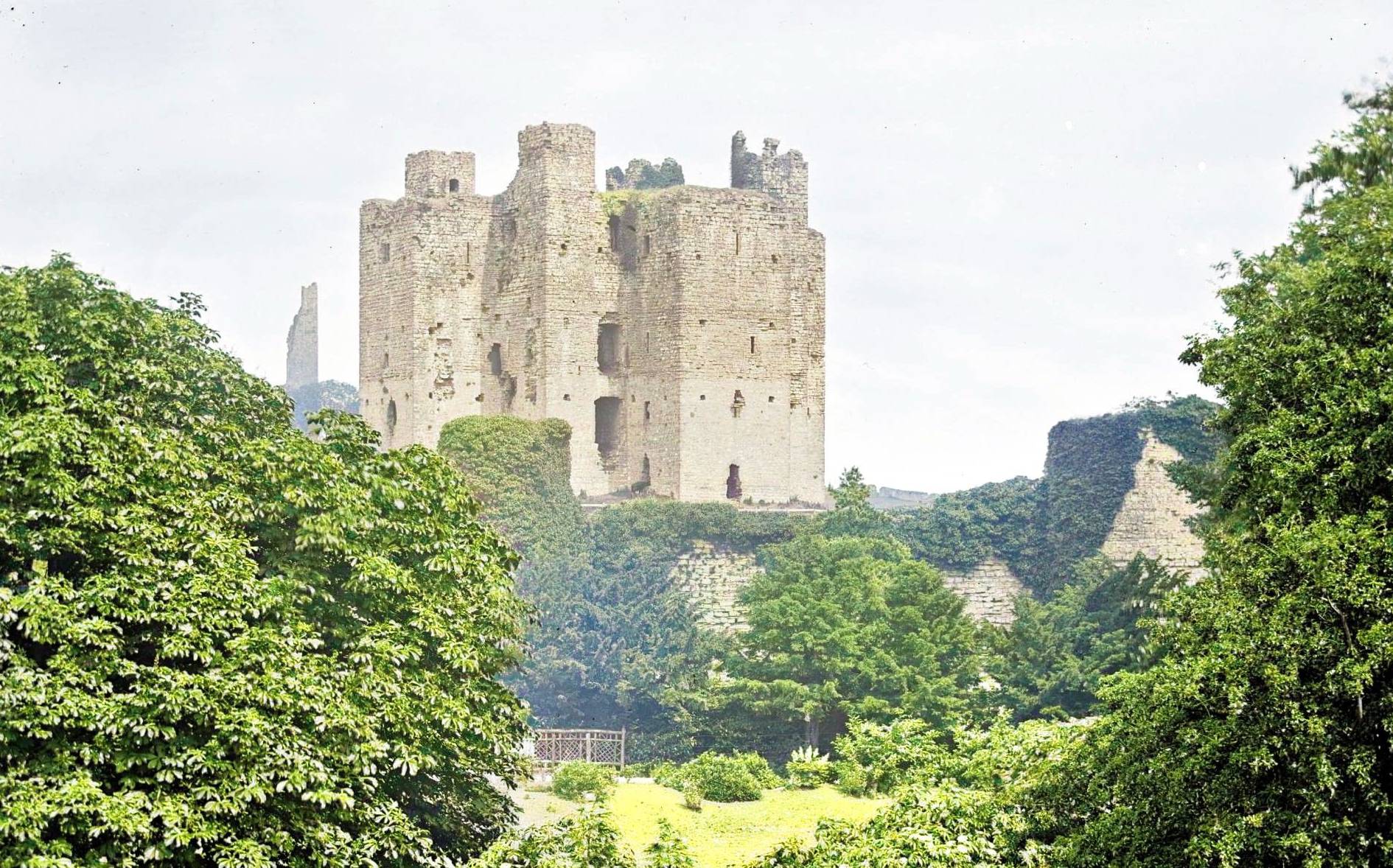Trim Castle, Co. Meath
Stand where Mel Gibson filmed Braveheart at Ireland's largest Anglo-Norman castle, where a 20-sided tower rises from the banks of the River Boyne.
Trim Castle, Co. Meath
Standing on the south bank of the River Boyne in County Meath, Trim Castle sprawls across 30,000 square metres – making it the largest Anglo-Norman fortress in Ireland. Built over three decades from the 1170s, this stone giant replaced an earlier wooden fort that had been torched by the last High King of Ireland during his campaign to drive out the Norman invaders.
The castle’s story begins with Hugh de Lacy, a powerful Anglo-Norman lord who received the vast Lordship of Meath from King Henry II in 1172. Henry needed someone to keep the ambitious Strongbow in check, and de Lacy was his man. The location wasn’t random, Trim (from the Irish Áth Truim, meaning ‘Ford of the Elder Trees’) controlled a vital river crossing that had been important since St Patrick supposedly founded a monastery here centuries earlier.
A Fortress Built to Last
After the Irish burned down his first wooden castle in 1174, de Lacy rebuilt in stone with a vengeance. The result was extraordinary; a massive keep with a unique cruciform design that created 20 defensive sides. Those holes you’ll spot peppering the walls? They once held wooden galleries where defenders could rain arrows and stones on attackers below.
The keep rises three storeys, with walls three metres thick. Originally entered through a small door in the eastern tower, it housed everything from the lord’s private chambers to a great hall and chapel. A series of curtain walls, towers and gates protected an area of about three acres, all surrounded by a deep moat.
Power, Politics and Murder Most Foul
The castle passed through some of medieval history’s most colourful characters. Hugh de Lacy himself met a sticky end in 1186 when a young Irish noble called Gilla-gan-inathair (literally ‘youth without bowels’ – presumably a skinny lad) buried an axe in his skull whilst de Lacy was demonstrating proper pickaxe technique. King Henry was reportedly delighted.
Later owners included Roger Mortimer, who allegedly arranged King Edward II’s death with a red-hot poker in a particularly unpleasant fashion – though that’s probably just medieval gossip. The castle later became a Yorkist stronghold during the Wars of the Roses and hosted the Irish Parliament seven times in the 15th century.
From Fortress to Film Set
By the 17th century, Trim had fallen into decline. Cromwell’s soldiers helped themselves to roof beams and lead, whilst locals treated it as a handy source of building materials. The castle passed through various hands, including the Duke of Wellington’s family, before the state finally bought it in 1993.
These days, Trim Castle is probably best known as a film location. It doubled as York, London and Edinburgh Castle in Braveheart (1995), with the Barbican Gate featuring prominently as William Wallace crossed the Boyne to meet the Princess of Wales. The Big Red One (1980) with Lee Marvin also shot scenes here.
Unlike many Irish castles that were transformed into comfortable country houses, Trim remains largely unchanged since medieval times. Modern catwalks inside the keep let you see the different building phases clearly, whilst excellent OPW guides bring the castle’s brutal history to life.
Good to Know
Getting There: The castle dominates Trim town centre with a large car park directly in front. Allow at least two hours for parking to avoid tickets. Bus Éireann Route 190 runs hourly from Drogheda, whilst Route 111 from Dublin stops at Boyne Bridge By-Pass, about 10 minutes' walk away.
Opening Times: Daily 10am-5pm from mid-February to October; weekends only November to mid-February. Last admission one hour before closing.
Tickets: Castle grounds free; guided keep tours €5 adults/€3 children.
Accessibility: Grounds have accessible paths, but the keep's steep steps and spiral staircases aren't wheelchair accessible.
Tips: Book a guided tour of the keep – it's the only way to access the interior and the guides are brilliant. The River Walk on the opposite bank offers stunning castle views and is perfect for dogs (not allowed in castle grounds). The nearby Yellow Steeple and Sheep Gate are remnants of medieval Trim's town walls, worth a quick look.
Tags
Visitor Notes
Added by
IrishHistory.com
Cal. doc. Ire. – Calendar of documents relating to Ireland 1171-1307, ed. H.S. Sweetman (5 vols., London, 1875-86).
Mac Niocaill, G. (ed.) 1992 Crown surveys of lands, 1540-41: with the Kildare rental begun in 1518. Dublin. Irish Manuscripts Commission.
Potterton, M. 2005 Medieval Trim: history and archaeology. Dublin, Four Courts Press
Sweetman, P.D. 1978 Archaeological Excavations at Trim Castle, Co. Meath, 1971-74. Proceedings of the Royal Irish Academy, 78C, 127-98.
Hayden, A. 2011. Trim Castle, Co. Meath: Excavations 1995-8. Dublin, Stationary Office: Archaeological Monograph Series, No. 6.
Othway-Ruthven, A. J. 1967. The Partition of the de Verdon Lands in Ireland in 1332. Proceedings of the Royal Irish Academy, 66C, 401-55.
Condit, T. 1996 Rings of truth at Trim Castle, Co. Meath. Archaeology Ireland, vol. 10, No. 3, 30-3.
Earle, P. 1977 The Plantagenets. in Antonia Fraser (ed.) The Lives of the Kings and Queens of England, 51-89. London, Futura
McNeill, T. 1990 Trim Castle, Co. Meath: the first three generations. Archaeological Journal, 47, 308-36.
Cummins, W. 2011 The conservation and presentation of the castle. In A. Hayden 2011, 29-41.
Butler, R. 1861 Some notices of the castle and of the ecclesiastical buildings of Trim. 4th edition Dublin, Hodges, Smith.

